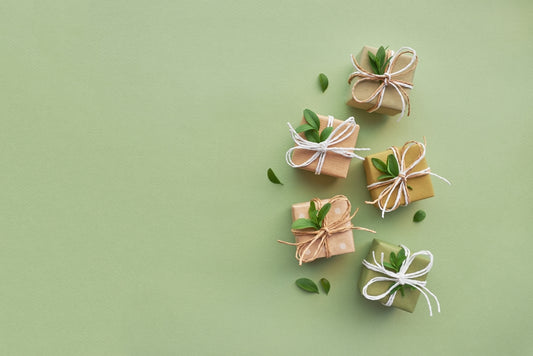Crafting beautiful bead bracelets allows you to show off your unique style, and BusyBead makes it easy to showcase your creativity with their high-quality silicone bead products. Whether you are a seasoned jewelry maker or just starting, tying bead bracelets correctly is crucial to create a durable design that will last for years to come. Perfectly tied bracelets will not only enhance your personal style, but they also make fantastic gifts for friends and family. In this tutorial, we will guide you through all the steps necessary to tie a beautiful bead bracelet with various materials and styles, including adjusting the length of the bracelet and adding decorative elements. Read on to discover how to properly tie your bead bracelets and why it's essential to do so.
Types of Beads and Thread
When it comes to bead bracelets, choosing the right bead materials and thread is essential for creating a high-quality, long-lasting piece. Here, we'll go over different types of beads and threads, and give you tips on how to choose the right materials for your bracelet.
Different Types of Bead Materials
- Glass beads, which come in a variety of colors, shapes, and finishes.
- Metal beads, which can be shiny, matte, or textured, and are durable and long-lasting.
- Stone beads, which come in a range of colors and patterns, and are believed to have healing properties.
- Organic beads, such as wooden or bone beads, which have a natural look and feel.
Each type of bead material has its own unique characteristics, so it's important to choose the right one for your project based on your desired aesthetic and durability requirements.
Different Types of Threads or Wire
- Elastic cord, which is easy to work with and allows for a flexible, comfortable fit.
- Nylon thread, which is strong, durable, and comes in a range of colors.
- Waxed cotton cord, which is also durable and comes in a range of colors, and gives a natural and rustic look to your bracelet.
- Beading wire, which is ideal for heavier beads and creating stiff bracelets that hold their shape.
The type of thread or wire you choose will depend on the weight and size of your beads, as well as your personal preference for flexibility and appearance.
Ultimately, the key to selecting the right materials for your bead bracelet is to match the bead materials and thread or wire, so that they complement each other in terms of appearance and durability.
Preparing to Tie a Bead Bracelet
Before you begin making your bead bracelet, it's important to prepare your workspace, measure the correct length of thread or wire, and prepare your beads. Proper preparation will make the process smoother and more enjoyable.
- Setting up your workspace: Create a workspace that is clean, clear, and well-lit.
- Make sure you have all the tools you will need and enough space to work on your bracelet comfortably.
- Measuring the correct length of thread or wire: It's essential to choose the right length of wire or thread for your bracelet. A general rule is to measure a length of wire or thread that is roughly double the length of your desired finished bracelet.
- Make sure to add a few extra inches to the measurement to allow enough room for knot tying and bead spacing.
- Preparing the beads: Sort out the beads that you plan to use for your bracelet and lay them out in an organized manner. Having them readily available and in the order you want to use them will make the beading process flow smoothly and efficiently.
By following these preparatory steps, you're well on your way to creating a stunning bead bracelet that stands out. The next step is to understand different techniques for tying a bead bracelet.
Different Techniques to Tie a Bead Bracelet
When it comes to tying a bead bracelet, it's important to use the right technique to ensure that it stays secure and looks great on your wrist. Here are some of the most common techniques for tying a bead bracelet:
- Basic knotting techniques: These traditional techniques involve tying the thread or wire around the beads using a knot such as the overhand knot or the surgeon's knot. The overhand knot is one of the simplest and easiest knots to tie, making it a great choice for beginners. The surgeon's knot is a little more complex and involves tying an extra loop before completing the knot, which helps to prevent the threads from slipping or unraveling.
- Adjustable knot or sliding knot: If you want to tie a bracelet that can be easily adjusted to fit different wrist sizes, an adjustable knot or sliding knot is a great option. This technique involves using a series of knots to create a sliding closure that can be tightened or loosened as needed. It's a little more complicated than basic knotting techniques, but the end result is a bracelet that is both secure and adjustable.
- Tips for avoiding tangled knots and loose threads: No matter which technique you use for tying a bead bracelet, there are a few tips that can help you avoid common problems such as tangled knots and loose threads. For example, make sure to use the right length of thread or wire for your bracelet, and always tie your knots tightly to ensure that they stay in place. Additionally, consider using a bead mat or tray to keep your beads organized and prevent them from rolling away while you work.
By using the right technique and following these tips, you can create a beautiful bead bracelet that will stay securely on your wrist and look great for years to come.
To add a personal touch to your bead bracelet, consider adding decorative elements such as charms, pendants, or other embellishments. Here are some tips on how to add them to your bracelet:
- Choose charms that complement your bead selection and match your personal style. Charms can be found in a variety of shapes, sizes, and themes, and can be added to your bracelet in different ways depending on their style. Some charms come with their own attachment mechanism, while others may require a jump ring or loop to be added.
- Mixing and matching bead materials is a great way to add texture and interest to your bracelet. For example, you can mix smooth glass beads with faceted crystal beads, or use metal spacer beads to complement the colors of your chosen beads. Get creative and experiment with different color and texture combinations to find a look that you love.
- Adding customizations such as initial or name beads can personalize your bracelet and make it truly unique. These can be added by attaching individual letter beads to your thread or wire, or by ordering custom-made beads.
Remember that adding decorative elements should enhance the overall look of your bracelet, not overpower it. Choose embellishments that complement your chosen bead materials and colors, and don't forget to mix and match to find the perfect combination. The next section will cover ways to care for your bead bracelet to ensure its longevity and beauty.
Caring for Your Bead Bracelet
A bead bracelet is not only a fashion accessory but also a valuable piece of art that requires proper care to maintain its durability and quality. Here are some essential tips for taking good care of your bead bracelet:
Tips for storing your bracelet
- Store your bead bracelet away from direct sunlight, moisture, and dust.
- Keep your bracelet in a clean and dry place, such as a jewelry box, to avoid getting it tangled or damaged.
- Never hang or expose your bracelet to acids, perfumes, or chemicals that may cause discoloration and damage to the beads.
How to clean and maintain your beads and thread
- Clean your bead bracelet regularly using a soft cloth or brush to remove dirt and stains from the beads.
- Avoid using water or harsh chemicals to clean your bracelet, as it may damage the delicate beads and thread.
- For a deeper clean, use a small amount of mild soap and lukewarm water, and gently scrub the beads with a soft brush.
- After cleaning, rinse the bracelet thoroughly and let it dry completely before storing.
Common mistakes to avoid
- Avoid wearing your bracelet while doing activities that may cause stretching or damage to the thread, such as swimming, showering, or strenuous exercise.
- Never apply ointments, lotions, or cosmetics on your bracelet, as it may cause discoloration or damage to the beads.
- Don't pull or force the beads or thread, as it may cause the bracelet to break or become misshapen.
By following these simple tips, you can keep your bead bracelet looking shiny and new, and enjoy wearing it for a long time.
In Summary
Tying a bead bracelet may seem like a daunting task, but it's an incredibly rewarding experience that anyone can master with just a little bit of patience and practice. We hope that this tutorial has given you the confidence and inspiration needed to create your own beautiful bead bracelets.
As we've discussed throughout the article, it's crucial to tie a bead bracelet properly to ensure it stays in place and lasts for a long time. Whether you choose to use a basic knot or a sliding knot for closure, it's important to take the time to measure the length of your thread or wire, add decorative elements, and care for your bracelet properly.
We appreciate you choosing BusyBead for your crafting needs and hope that you will continue to explore our high-quality silicone beads for all of your DIY projects. Don't forget to share this tutorial with others who may be interested in making their own bead bracelets, and happy crafting!
FAQs
What is the best type of thread or wire to use for bead bracelets?
It ultimately depends on the type of beads you are using and personal preference. Some popular options include nylon thread, silk thread, and elastic cord. BusyBead offers a variety of thread and wire options for bead bracelets.
Can I add additional beads or elements to my bracelet after it's been tied?
Yes, you can add additional beads or decorative elements to your bracelet after it's been tied. However, be careful not to damage the knots or the thread while doing so. It's always best to add all elements before tying the bracelet if possible.
How should I store my bead bracelet?
It's best to store your bead bracelet in a cool, dry place to avoid any moisture damage. You can also store it in a jewelry box or on a jewelry rack to keep it organized and tangle-free.
Can I clean my bead bracelet?
Yes, you can clean your bead bracelet. However, be careful not to damage any delicate beads or elements while doing so. You can use a soft cloth or toothbrush with mild soap and water to clean the bracelet. Avoid using harsh chemicals or cleaners.
What should I do if my bead bracelet breaks?
If your bead bracelet breaks, you can try to repair it by retying the knots or replacing any broken beads or elements. BusyBead also offers repair services for their bead bracelets if needed.




